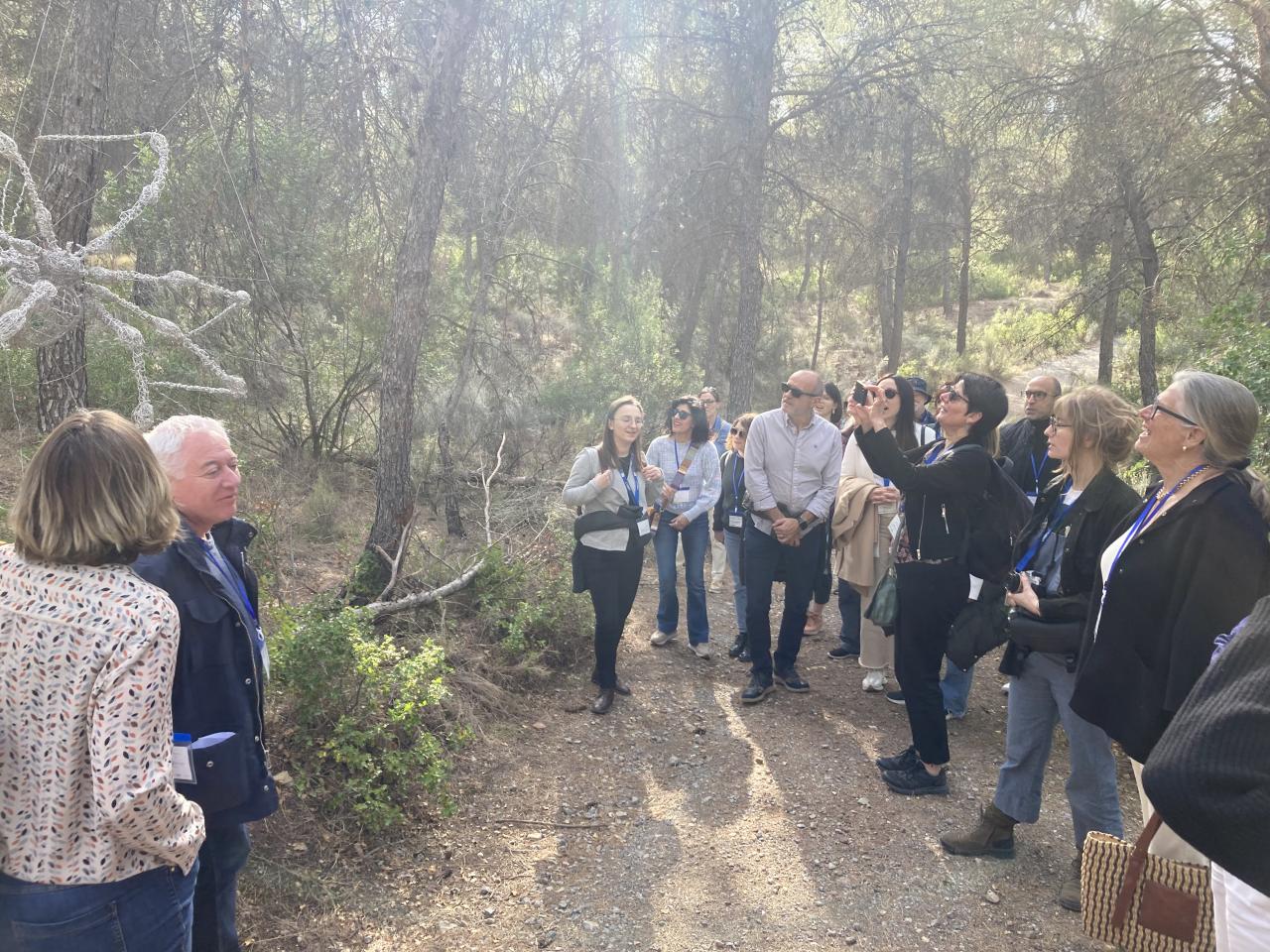The Ejidos of Cehegín: abandoned hillsides in the old part of town
The central theme of this meeting in Cehegín was cultural heritage as a resource. Because this is a relevant issue in Cehegín due to the context of its case: The Ejidos, an abandoned site in a culturally protected old town. With the treatment of this area, the municipality of Cehegín wants to face the main challenges of these last years: the revitalisation of the old town in a situation of abandonment and depopulation, the lack of green areas, the complicated orography of the land and the difficulty to implement sustainable energy solutions in a protected space.

Visiting the Ejidos
Results of interest for the case of Cehegín
One of the most important aspects of this event for the municipality of Cehegín was the Peer Review activity, a powerful technique for generating innovative ideas and practical solutions using the wisdom of all participants. During this activity, the partners present at the meeting offered a variety of perspectives and expertise after visiting the Ejidos, thus generating a rich and constructive dialogue on the future of Ejidos.
In relation to the community, the partners suggested transforming these spaces into meeting places for local residents, providing recreational areas such as picnic areas and cafés, and promoting participatory activities. In terms of design, it was proposed to take advantage of the topography of the area to create climbing and play areas for children, as well as to incorporate shading elements to address climate change. In addition, the importance of using materials that integrate with the environment and designing accessible paths for vulnerable people was highlighted.
Related of the production of sustainable energy, the possibility of incorporating innovative solutions was discussed, such as solar farms outside the historic centre instead of on the site, or using mobile solar panels and benches on the ground with energy to charge mobile devices. The importance of not only producing clean energy, but also encouraging more efficient consumption was emphasised. In relation to the decaying buildings in the old town adjacent to the site, it was proposed to create a catalogue of protected buildings, to propose public aid to restore housing to reduce its dependence on coal and to establish local regulations to oblige the maintenance of abandoned spaces. Regarding the issue of abandonment, the possibility of seeking out the heirs of these properties and offering public funding for their restoration was also discussed. Finally, in terms of safety, the idea of implementing a cable car and finding ways to make it accessible to the elderly and people with reduced mobility by installing walkways was raised.
The importance of the Peer Review was evident not only in the diversity and depth of the ideas proposed, but also in their potential impact on the local community. By engaging project partners in a process of active collaboration and critical reflection, the Peer Review not only enriched the quality of the proposed solutions, but also strengthened the collective commitment to the effective implementation of these solutions on the ground.
Sharing good practices in the GreenPlace network
Furthermore, during the partners' visit, Cehegín presented a series of good practices that have been carried out in the municipality. These projects have contributed to urban revitalisation and promote the culture successfully in the municipality. On the one hand, the Ecological Park is a natural forest where nature merges with art pieces in a biennial exhibition. El Coso, on the other hand, is an urban park that has revitalised the old town by integrating nature-based solutions into a municipal building. In addition, the initiative of artistic locals, supported by the City Council, which seeks to revitalise the old town by restoring and providing empty premises for artists and artisans. Finally, the 3D parametrisation of the old town and the Cehegín Río project focusing on the renaturation of the riverbed, with the aim of eliminating invasive species in a natural way, were of great interest to the partners. These visits have served as sources of inspiration for the rest of the partners and they have highlighted the importance of integrating nature and culture in the process of urban revitalisation.

Visiting artistic places in empty biuldings
To be continued
In summary, the transnational meeting of the URBACT Green Place network in Cehegín was not only a meeting point for the exchange of ideas and experiences, but also an evidence of the benefits of Peer Review as a powerful tool for innovation and collaboration in the field of urban sustainability, this methodology will be used in the rest of the meetings. With a continued commitment to this collaborative technique and a shared vision for a more sustainable future, the URBACT Green Place network is well positioned to continue to make a positive impact on our urban communities across Europe.

GreenPlace Team
Submitted by Victoria Artés and Raquel Galarza, from Eurovértice (external assistance of the municipality of Cehegín for the GreenPlace project)


